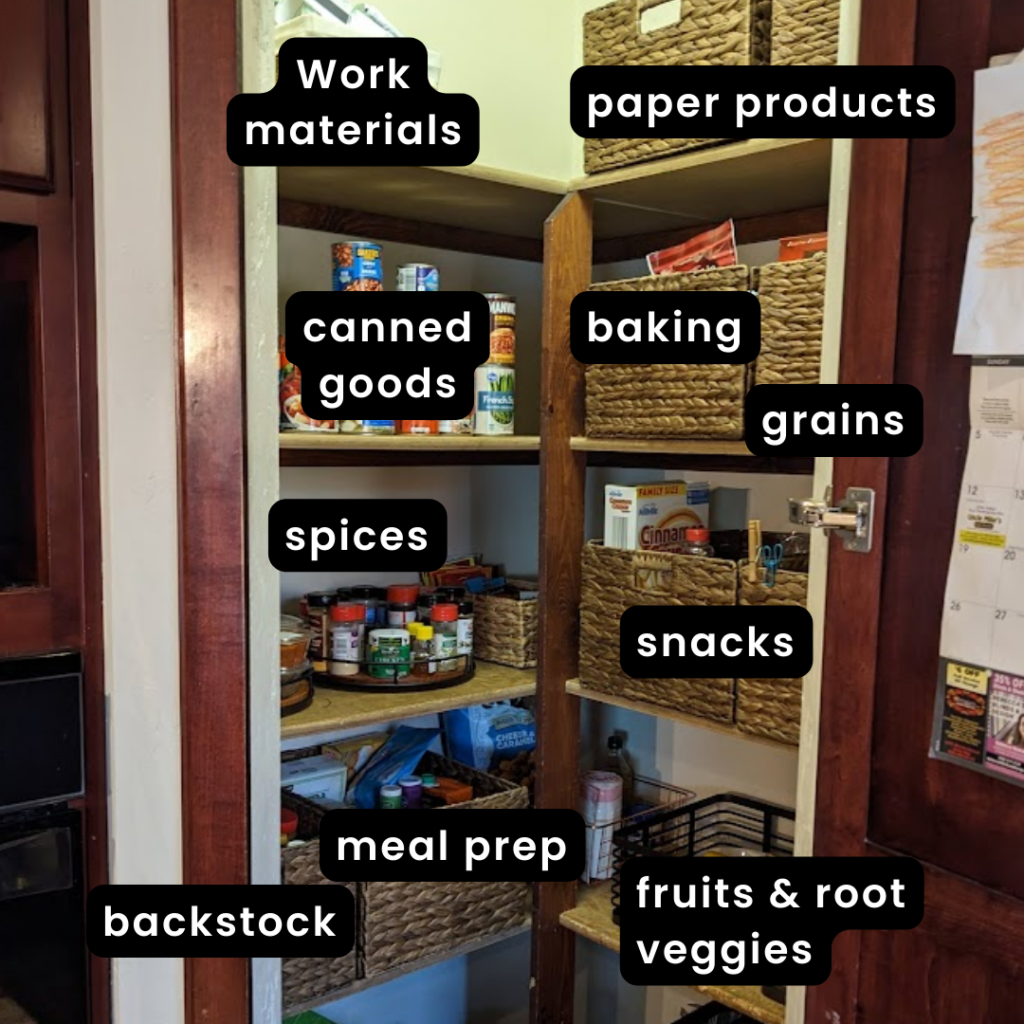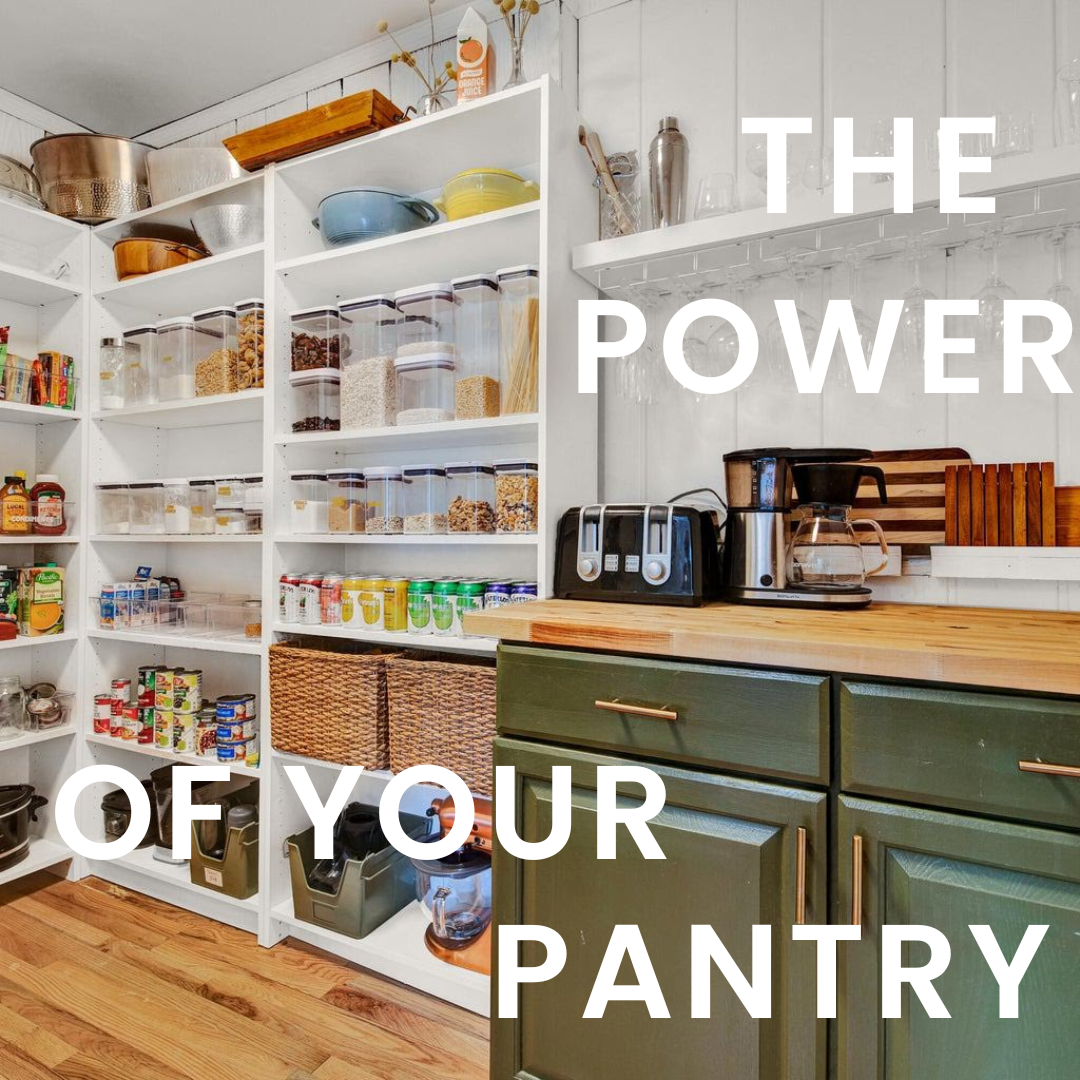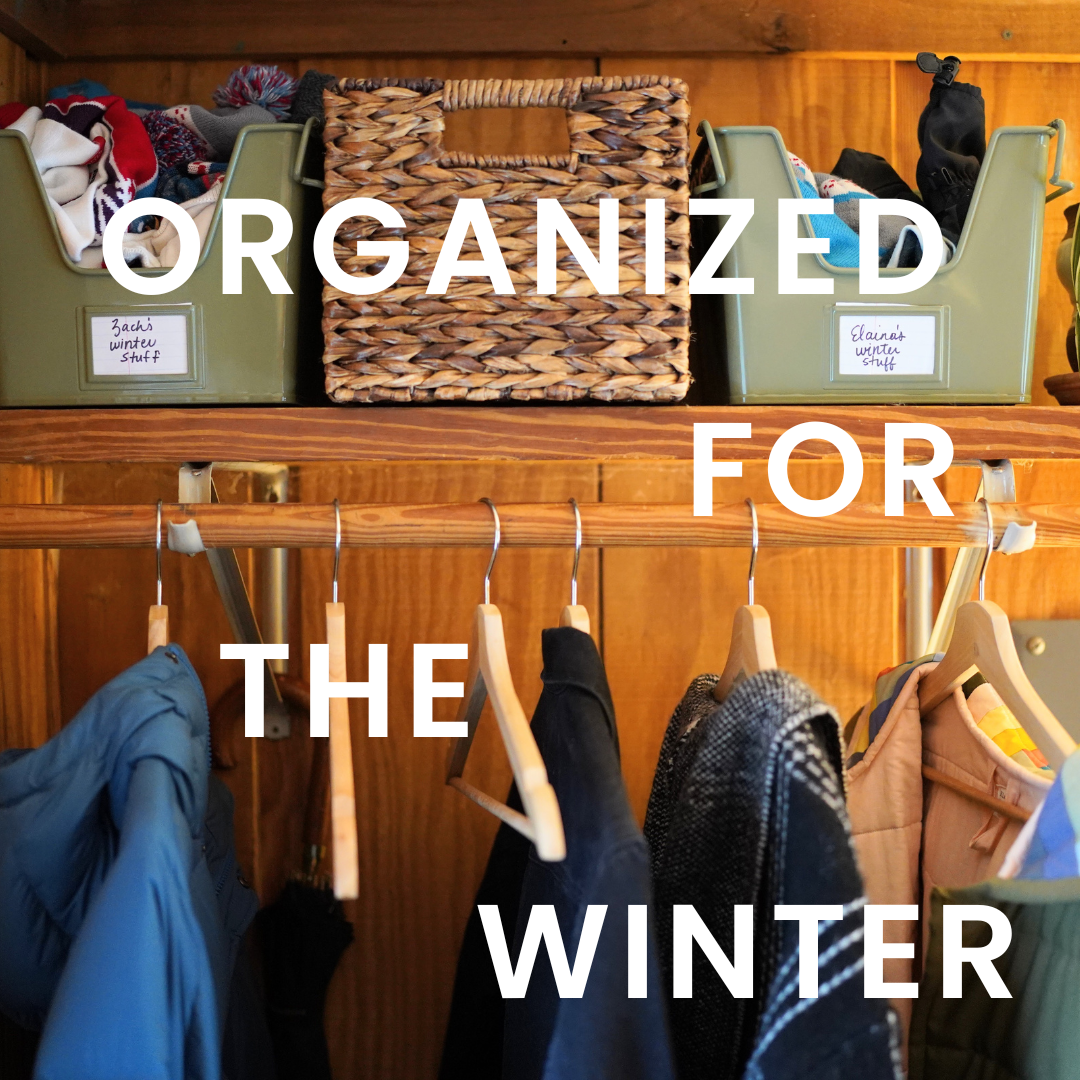If you’ve ever opened your pantry door and felt a wave of chaos, you’re not alone. The pantry tends to be a hotspot for clutter, but fear not – organizing it doesn’t have to be an overwhelming task. In fact, the amount of work you have in front of you is nothing compared to the lasting effects of an organized pantry. Regardless of where you are looking for advice on this topic, step 1 and 2 will always be to cull through what you have and categorize like items. That is easier said than done, so let’s walk through this together:
Step 1: Assess and Purge
This is the most important step because at this point you are actually doing it. You are taking matters into your own hands! I’m proud of you for that. Now, take a moment to assess the current state of your pantry. What do you like about it? What gives you the ick?
Take everything out. Assess the quantity you have. Remove items that are expired, duplicates, or simply no longer needed. This is the fun part: this initial purge sets the stage for a fresh start and is a springboard for new habits and routines. Culling through your pantry and making choices about what stays and what goes gives you agency about what you allow into your life (and into your body!).
Another fun aspect of this part is that you might have the opportunity to donate food! 40% of food is wasted in America and you aren’t going to be a part of that statistic anymore. Congrats!
Step 2: Categorize Like Items
Did I say that step 1 was the fun part? It is, but step 2 might be even more fun. Group similar items together to streamline your pantry’s layout. Consider creating categories such as grains, snacks, canned goods, and baking essentials. This not only makes finding items a breeze but also makes maintaining the organization a straightforward task.
Alternative to a strict “like item” grouping rule, you can think about this more critically and group items together with efficiency in mind. Do all of your dinner foods go together so all you have to do is remove a bin and have everything ready to go? The way you categorize your pantry items can set the stage for zones and stations within your pantry. For example, coffee, cereal, and morning vitamins all grouped can make an easier morning routine. Don’t be afraid to bring a non-food item into your pantry if it makes your life easier.

Step 3: Think about Storage Solutions that Might Work for you.
I love an aesthetically pleasing pantry, but I couldn’t care less if your pantry is aesthetically pleasing or not. Before you go all in and buy a bunch of new things for your pantry, consider how you function. The goal is for the pantry to support you in a more streamlined day, but can also trick you into different habits and routines if you want it to.
The pantry above has no special canisters for foods to be decanted. Why? Because the owner tried that decades ago, didn’t like it, and doesn’t want to maintain that system. And that is okay! Instead, this pantry is focused on concealed storage to sort items and define boundaries without requiring extra time and energy to unload groceries. Easy and looks beautiful (despite my poor photography skills)!
My pantry is organized in clear containers so I can abide by my boundaries. Clear containers encourage me to shop in bulk and make more recipes from scratch.
Whether you have a big walk-in pantry or a single shelf in a cabinet, you can maximize your pantry’s potential with the right storage solutions:
- Clear, airtight containers for dry goods not only keep ingredients fresh but also provide a visual uniformity that instantly enhances the overall look. (Wide-mouth Mason Jars are a great budget option!)
- Utilize baskets or bins for grouping smaller items or snacks. Try to shop your home first. Target has a lot of good options but make sure you measure! I love these plastic bins and these woven baskets.
- Don’t be afraid to adjust shelves or install more.
- Move forward by changing your shopping habits to invest in uniform spice jars (Simply Organic is a great option that can be reused easily and is budget friendly for a long term project). Squares are best because they nest easily together and can lay down in a drawer without rolling! You can accelerate your cohesion by buying a set of similar jars here.
- Come up with a plan and implement it slowly so as not to break the bank.
- Square jars/canisters are better in smaller spaces as they can stack and nest better. Oxo Pop canisters can be a bit more pricey, but are a very functional solution.
- Consider using lazy susans to make items easier to access
There is a plethora of organizing tools out there to purchase! That’s great because there is a chance that the perfect solution is out there waiting for you. However, be warned that simply buying organizational products DOES NOT make you organized.
Step 4: Label- but only go crazy if you want to
Labels are the unsung heroes of pantry organization, but they don’t need to be over the top. Always label your baking soda, baking powder, powdered sugar, and any different types of flour you have. While you are at it, you might as well label your sugar as well, but if we are being honest, you can probably tell that sugar is sugar and all the other powdery things are not sugar. If you are dealing with a lot of clear canisters, don’t worry about labeling everything. In fact, it might even make your pantry more difficult to maintain as you cycle through different food options.
However, clearly labeled containers and shelves ensure that everyone in the household knows where items belong. This small step significantly contributes to the sustainability of your organized pantry.
I like to use a dymo label maker for easy labelling. There are a lot of sellers on Etsy who offer custom labels, which can easily be made most affordably with a cricut joy.
Step 5: Maintain Regularly (AKA- Adjust your shopping habits!!)
Now that your pantry is organized, keep in mind that organization is an ongoing process, not a one-time task. Set aside a few minutes each week to do a quick scan of your pantry before you go grocery shopping. Take note of any items that need replenishing or adjustments to maintain the system. Chances are your pantry will need adjustments as life changes from welcoming a new baby into your family or picking up a new weight-lifting routine or finding out you should watch your cholesterol. Consistent effort, and living in the moment prevent the re-emergence of pantry chaos.
As a general rule of thumb, I like to keep my Costco shopping to a minimum (unless I know I am going to fly through things and have a place for them!) and follow a “store it at the store” mentality. Adjusting your shopping habits to only buy what you can eat between grocery trips is a powerful way to save money and keep your pantry in order.
Step 6: Embrace Simplicity
In the quest for an organized pantry, simplicity is your ally. Don’t overthink it too much, but do consider what is going to be best and easiest for you and your household. Keep items visible, accessible, and easy to reach. Avoid overcrowding shelves and, instead, focus on creating a clean, open space that allows for quick and efficient meal preparation. Consider any problems you face with your current situation and try to address those first. If done pragmatically, I promise, it will improve your life.
Congratulations! With these easy steps, you’ve transformed your pantry into a well-organized space. What was once akin to a utility closet is now a snack oasis. Remember, the key is to embrace simplicity and make organization a part of your routine. A tidy pantry not only simplifies your daily life but also adds a touch of harmony to your home. Happy organizing!







